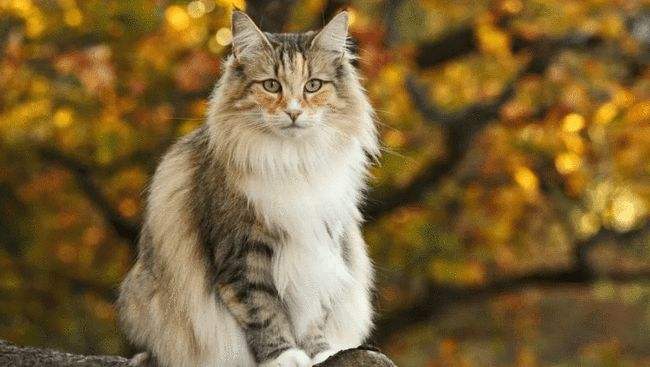Norwegian Forest Cat
IUCN
LCBasic Information
Scientific classification
- name:Norwegian Forest Cat
- Scientific Name:Skogkatt, Skaukatt, Norsk Skogkatt, Norsk Skaukatt
- Outline:Carnivora
- Family:Felidae
Vital signs
- length:50cm
- Weight:5-10kg
- lifetime:18-20 year
Feature
Cats with Norse mythology
Distribution and Habitat
It lives in the Norwegian forests and is a cat species unique to the Scandinavian Peninsula.
Appearance
The head is an equilateral triangle with a short, muscular neck. The ears are medium to large, with rounded tips and a wide base, set low and alert. They are well feathered. The eyes are large, almond-shaped, expressive, slightly upturned, green, gold or golden green hues, blue or mandarin duck eyes may be seen in white cats. The nose is medium long, with a high bridge, a straight line from the brow to the tip of the nose, a flat forehead, and a slightly curved skull and neck. The chin is strong and slightly rounded. The body is medium length, muscular, and has a strong bone structure. The chest is broad, and the overall body shape shows power, with a deep waist; the waist is large, but not fat. Male cats are larger and more majestic; female cats are smaller and more graceful. The limbs are of medium length, with the hind limbs longer than the front limbs, which makes the hips higher than the shoulders. The thighs are well-muscled and the calves are strong. When viewed from the back, t
Details
The Norwegian Forest Cat is a cat that lives in the Norwegian forest. It is a breed unique to the Scandinavian Peninsula.

There are two speculations about the origin of the Norwegian Forest Cat: The first possibility is that the pirates in the 13th century brought back cats from Asia Minor (Caucus, Anatoly, etc.) to eliminate the rats that invaded their ships. The second possibility is that it was brought by tribes from Central Europe or Asia that migrated to Scandinavia before the Middle Ages. Cats that migrated from other regions may have adapted to the harsh climate of Scandinavia at that time, and thus evolved thick, double-layer heat-insulating fur that could withstand the harsh climate.
In the ancient Norwegian mythology that has been passed down from generation to generation, there are two gray cats like lions, dragging the goddess's chariot and flying across the sky. These two cats are very strong and huge. The huge cats in the myth are very similar to the description of the modern Norwegian Forest Cat. Therefore, the origin of the Norwegian Forest Cat can be traced back thousands of years. This myth was not known until 1835, when folklorist Peter Christian Asbjørnsen and poet Jørgen Moe wrote and published a set of selected Norwegian folk tales and folk songs, which made the Norwegian Forest Cat widely known. The Norwegian Forest Cat is endowed with such mythological imagination, which makes their beautiful and majestic appearance more elegant and mysterious.
Originally, long-haired cats that lived in the forest for a long time were mixed with ordinary short-haired domestic cats. Since the short-haired gene is dominant and the long-haired gene is recessive, most of the offspring have short hair. After a long period of interbreeding, the purebred long-haired Norwegian Forest Cat has become less and less. In the 1930s, some purebred cat breeders in Norway began to pay attention to the fact that this legendary cat was gradually disappearing, and began to plan a breeding plan. Because it was very difficult to find a completely purebred and standard forest cat in the early days, the early breeding plan can be said to be stagnant. A group of enthusiastic cat breeders who defended the Norwegian national cat continued to work tirelessly and achieved impressive results, and it was recognized as an independent breed. Before World War II, Norwegian Forest Cats had already appeared in the cat show in Oslo. In 1973, after years of hard work, the Norwegian Forest Cat was recognized by FiFé in Paris, France, and listed as a purebred cat recognized by FiFé. People are increasingly interested in this cat, and Norwegians protect it as a living monument of nature. So far, it has been accepted by almost all cat shows in Europe.
The Norwegian Forest Cat is a relatively well-behaved cat with a very gentle personality, making it an ideal family companion cat.
Protect wild animals and eliminate game.
Maintaining ecological balance is everyone's responsibility!








